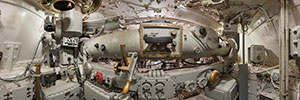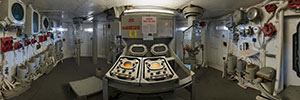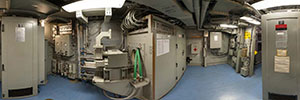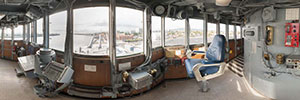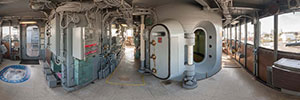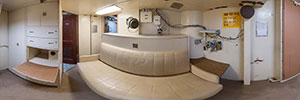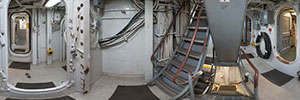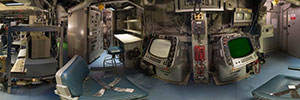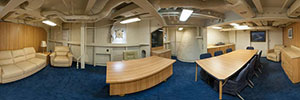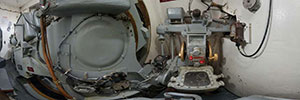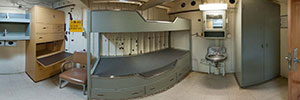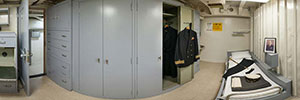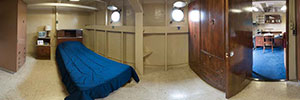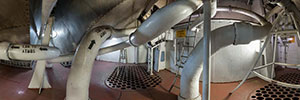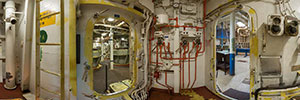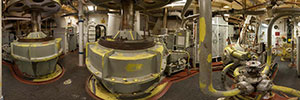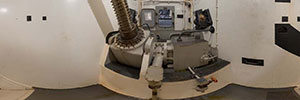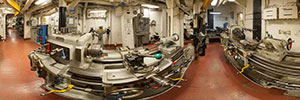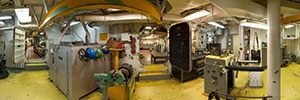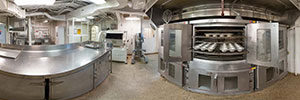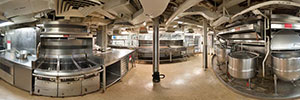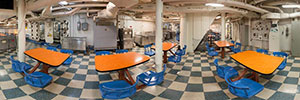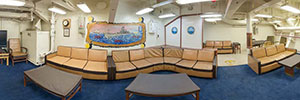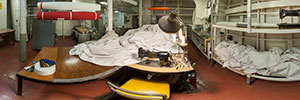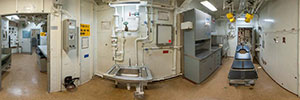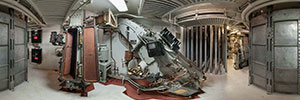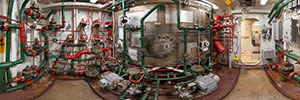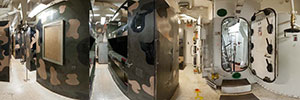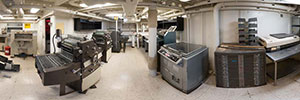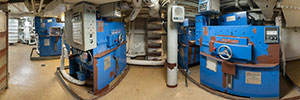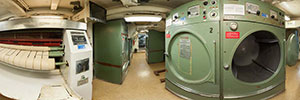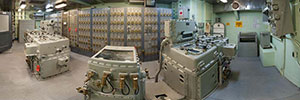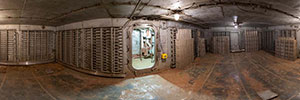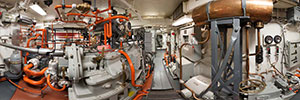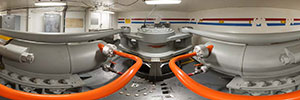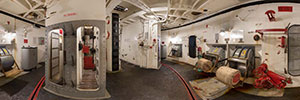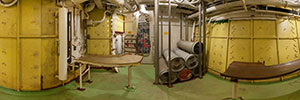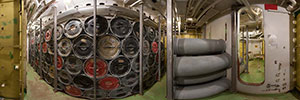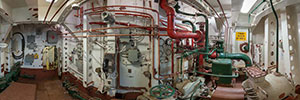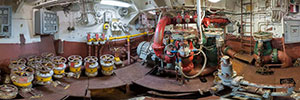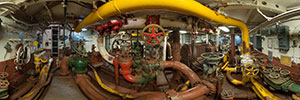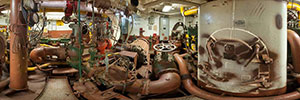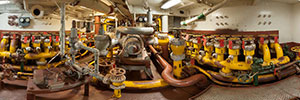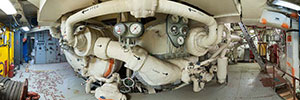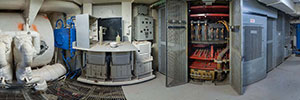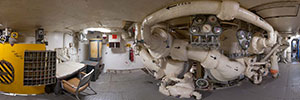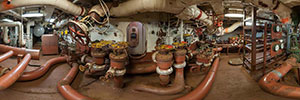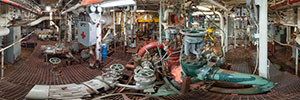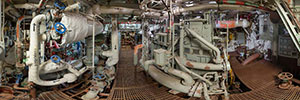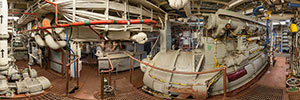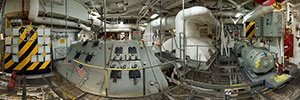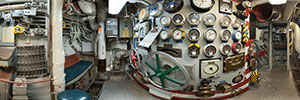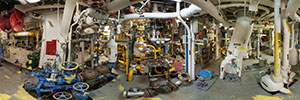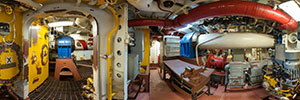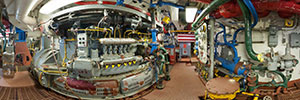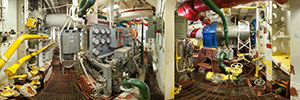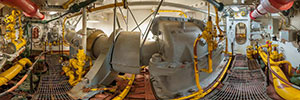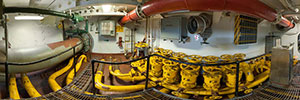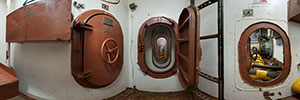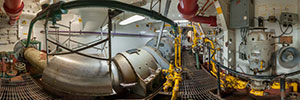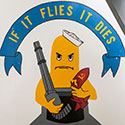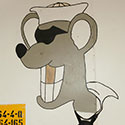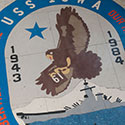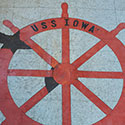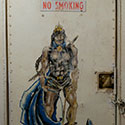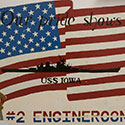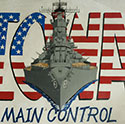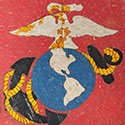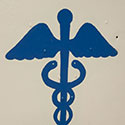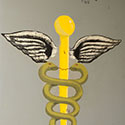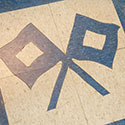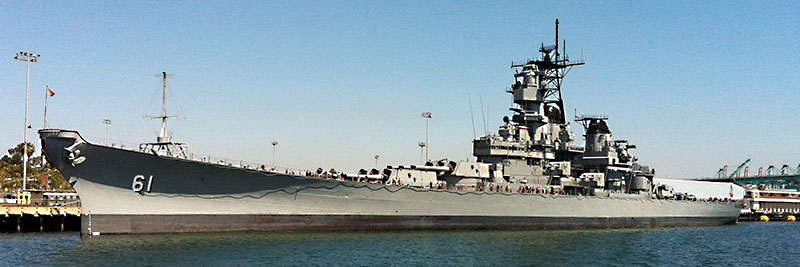
USS Iowa began her service with a mission to hunt down the German Battleship Tirpitz. Unsuccessful in locating Tirpitz, Iowa returned to the United States to be fitted out with a bathtub and elevator for President Roosevelt. Early in the morning on November 11, 1943, the President was transferred from the USS Potomac to Iowa for his trip to Casablanca for the Teheran Conference. In addition to the President, the majority of the Joint Chiefs of Staff was on board for the secret crossing.
The USS Iowa spent the remainder of World War II in the Pacific Theatre, where she participated in numerous campaigns including Truk, Wake Islands, Saipan, Tinian, Phillipine Sea, Kyushu, Hokkaido, and finally Tokyo Bay, where she acted as the radio ship for the Japanese surrender ceremonies. She was placed out of commission in reserve at Hunter's Point on March 24, 1949.
Recommissioned on August 25, 1951 due to escalating hostilities in Korea, Iowa went on to destroy numerous vital North Korean positions including the rail center at Chongjin, shut down railroad tunnels near Tanchon and Songjin, and participated in Operation Decoy. Iowa continued worldwide service until her decommissioning at Philadelphia Navy Yard on February 24, 1958.
On February 22, 1983 - after 25 years in mothballs - Iowa and her sisters were called on once again to serve in the Cold War.
USS Iowa was decommissioned for the third time on October 26, 1990. Pacific Battleship Center was awarded custody on September 6, 2011 and opened as a museum in the Port of Los Angeles July 2012. [HNSA]
Navy Ship Compartment Numbering
Compartments are numbered for identification to facilitate location. The identification number assigned locates each compartment specifically, and generally indicates the function and use of the compartment. Compartment numbers consist of four parts, separated by hyphens, for example 6-150-0-E, in the following sequence:
- Deck Number
- Frame Number
- Position in relation to centerline of ship
- Compartment use
The main deck is the basis for this numbering scheme and is numbered 1. The first deck below the main deck is numbered 2, and so on. The first horizontal division above the main deck is numbered 01, and the numbers continue consecutively for subsequent upper division boundaries. Compartments are numbered by the lowest deck within the space.
Frame Number:
The forward perpendicular is the basis for this numbering scheme and is numbered "0" (zero). "Frames" are consecutively numbered, based on frame spacing, until the aft perpendicular is reached. Forward of the forward perpendicular, frames are "lettered" starting from the perpendicular to the bull nose (A, B, C, etc.) while frames aft of the after perpendicular are "double lettered" to the transom (AA, BB, CC, etc.). Compartments are numbered by the frame number of the foremost bulkhead of the compartment. If this bulkhead is located between "frames," the number of the foremost "frame" within the compartment is used. Fractional numbers are not used except where frame spacing exceeds four feet.
Position in relation to centerline:
The ship's centerline is the basis for this numbering scheme. Compartments located so that the centerline of the ship passes through them are assigned the number 0. Compartments located completely to starboard of the centerline are given odd numbers, and those to port of centerline are given even numbers. The first compartment outboard of the centerline to starboard is 1, the second is 3 and so forth. Similarly, the first compartment outboard the centerline to port is 2, the second is 4 and so forth. There may be cases in which the centerline of the ship would pass through more than one compartment, all of which may have the same forward bulkhead number. Whenever this occurs, that compartment having the portion of the forward bulkhead through which the centerline of the ship passes is assigned the number 0 and the other carry numbers 01, 02, 03 etc.
Compartment Use:
A capital letter is used to identify the assigned primary use of the compartment. Only one capital letter is assigned, except that on dry and liquid cargo ships a double letter identification is used to designate compartments assigned to carry cargo. Examples of compartment use are storage areas, various tanks, and living quarters.
A = Storage
C = Ship and Fire Control
E = Machinery spaces
F = Fuel or Fuel Oil tanks
J = JP-5 tank
K = Chemical storage spaces
L = Living quarters
M = Ammunition
Q = Areas not otherwise covered
T = Vertical access trunk
V = Void
W = Water
| Class | Iowa Battleship |
| Launched | 27 August 1942 |
| Length | 887 feet |
| Beam | 108 feet |
| Draft | 38 feet |
| Displacement | 57,450 tons |
| Boilers | Eight Babcock and Wilcox |
| Main Engines | Four geared Westinghouse turbines; 53,000 horsepower each. |
| Propellers | Two five-bladed, two four-bladed |
| Maximum Speed | 33 knots |
| Compliment (WW II) |
2,800 |
| Armaments (1980's) |
|

